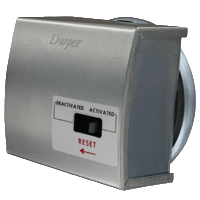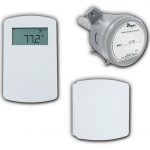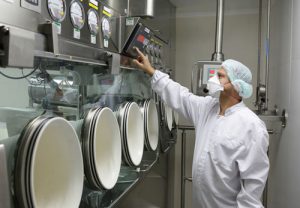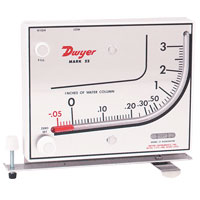
Question: Does Dwyer offer a differential pressure switch with manual reset for high duct static cutout applications?
Continue reading “Ask the Expert – High Duct Static Cutout Switch”

Manufacturing Excellence Since 1931

Question: Does Dwyer offer a differential pressure switch with manual reset for high duct static cutout applications?
Continue reading “Ask the Expert – High Duct Static Cutout Switch”

Dwyer offers several carbon dioxide measuring products that use non-dispersive infrared sensors as the sensing element. Carbon dioxide sensors are commonly used in building automation systems to monitor air quality. The level of carbon dioxide is indirectly proportional to the amount of people in a space and can be used to adjust ventilation for the space.
There are two basic types of gas sensing technologies: chemical reaction and infrared spectroscopic. Most chemical reaction sensors are electrochemical sensors, which are not as reliable as they can interact with multiple gases and wear from interaction with the gas. Continue reading “Non-Dispersive Infrared, NDIR, Carbon Dioxide Sensors”
In many industrial processes, the materials and the end product or by-products  of the process, such as dust or vapors, can create conditions for a hazardous environment. Processes that have potential for hazardous environments include: water treatment, oil drilling, gas and chemical processing, power generation, pharmaceutical, and food manufacturing. The measurement and control of these processes are essential in maintaining optimal conditions of the manufacturing system and preventing catastrophic events. Continue reading “The Operation of Gages and Switches in Hazardous Environments”
of the process, such as dust or vapors, can create conditions for a hazardous environment. Processes that have potential for hazardous environments include: water treatment, oil drilling, gas and chemical processing, power generation, pharmaceutical, and food manufacturing. The measurement and control of these processes are essential in maintaining optimal conditions of the manufacturing system and preventing catastrophic events. Continue reading “The Operation of Gages and Switches in Hazardous Environments”

pressure with a liquid filled manometer. The manometer worked on the principle that the difference in air pressure is measured as a function of gravity and liquid density. The challenge, however, was that the liquid in the manometer evaporates over time. This means that individuals would need to regularly add more liquid and re-calibrate the device. Continue reading “The Making of a Market Leader – The Magnehelic® Differential Pressure Gage”